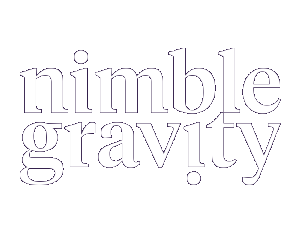Introduction: Finding New Money to Make Your Projects Happen
C.R.E.A.M. is arguably one of the most famous acronym-titled songs, right up there with Aretha Franklin’s R.E.S.P.E.C.T., the Village People’s YMCA, and AC/DC’s T.N.T.
If the Wu Tang were in the business of making technology systems instead of music, that acronym might have meant Cash and ROI Enables Accelerated Momentum (C.R.E.A.M.) instead of Cash Rules Everything Around Me.
Whether a Wu Tang fan or not, every IT and technology leader knows that even the best ideas can stall without the right funding.
Whether they're looking to create custom applications, create predictive algorithms, or launch a groundbreaking tech initiative, their question is often the same: "Where do we find the money to fund this project?"
The good news is that there are creative ways to fund projects that go beyond the usual budget allocations.
In this post, we’ll explore strategies we learned in our time as operators in companies big and small. Strategies like capitalization, leveraging add-backs in private equity (PE) portfolio companies, R&D credits, and more.
We’re not accountants and aren’t providing accounting advice, but when we were in the position of needing to find funding for projects, we found that talking to our finance department about methods like these can help secure the funds needed to turn tech visions into reality.
Capitalization: Spreading Costs Over Time
Capitalization is a common strategy for funding IT projects by spreading the cost of a large investment over the project's useful life. Instead of taking a one-time hit to your P&L, you can capitalize certain expenses, treating them as assets on your balance sheet and depreciating or amortizing them over time.
Downside: While this can make the financial impact of a project more palatable, it also means that you’re committing to long-term depreciation and amortization (D&A) expenses. These ongoing costs can reduce future financial flexibility, especially if your projections change or the project doesn’t deliver the expected returns.
Add-Backs in PE Portfolio Companies: Boosting EBITDA
For private equity-owned companies, add-backs can be a powerful tool. By adjusting EBITDA to account for non-recurring expenses like technology investments or work done on your behalf by consultancies, companies can diminish or even remove the impact of the project. Obviously talk to your finance department about what applies to your specific situation and what’s allowable below-the-line (where “the line” is gross profit).
Downside: The downside here is that add-backs can sometimes mask the true ongoing costs of a business. While they can make your financials look better in the short term, relying too heavily on add-backs can lead to unrealistic expectations and may complicate future financial KPIs. And, obviously, this strategy is pretty specific to PE-backed companies so that’s an inherent downside.
R&D Credits: Government Incentives for Innovation
Research and Development (R&D) tax credits can be a fantastic way to fund technology projects, especially those that involve developing new products or processes. These credits can provide significant tax savings, freeing up capital that can be reinvested in your project.
Downside: The primary challenge with R&D credits is the complexity of qualification and navigating the processes. Rules and regulations vary considerably by country and over time, and not every tech project will meet the criteria. The application process can be cumbersome and confusing. And, if you’re banking on these credits to fund your project, any delays or denials could put your plans at risk. Consult your finance department and potentially outside expertise specialized in this area.
Other Strategies to Consider
- Attributable Self-Funding: When there’s a “low hanging fruit” type project that will clearly have a major ROI, we’ve sometimes seen an internal reinvestment approach work for funding subsequent projects. If you’re saving $x in that first project, getting 0.5 x $x for the next project is often a super-viable argument.
- Grants and Subsidies: Depending on your location and industry, there may be grants or subsidies available to support specific types of technology investments. These funds can be a great boost but often come with strings attached, such as reporting requirements or restrictions on how the money can be used.
About Nimble Gravity
At Nimble Gravity, we’ve been in your shoes. We understand the importance of getting projects going and have used strategies like these in our operator roles prior to starting Nimble Gravity to fund critical technology projects.
The Wu Tang said "Cash Rules Everything Around Me" -- but with the right strategies, your tech vision can rule, too.
Spotify link: https://open.spotify.com/track/119c93MHjrDLJTApCVGpvx?si=9a8ae61ca6224b6d
















